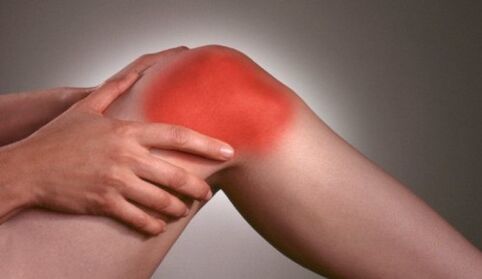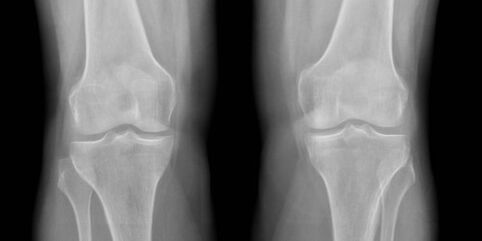Arthrosis (gonarthrosis) of the knee joint is a disease that causes deformity of the cartilage in the knee joint. This disease is very common, especially among the older generation. The work of the knee deteriorates, so difficulty in movement and feeling of pain are the most important signs of the disease. Today, knee arthrosis is common among 25-30 year olds. As for the versatility of the causes of the disease and its treatment accordingly. >There are two types of gonarthrosis: unilateral (affecting only one knee) and bilateral (affecting both knees). It is more common as a bilateral manifestation of the disease.

The reasons
Gonarthrosis, like coxarthrosis, most commonly occurs in old age. Although there is no exception to this today, and the fact that young people have symptoms of this disease. This suggests that the causes of gonarthrosis are different, and each can affect the appearance, exacerbation, and treatment of the disease in its own way. It is also possible for an organism to have a genetic predisposition, e. g. Arthrosis of the knee joint may be more common in some families than in others. In addition, this disease may not be genetically determined. Therefore, gonarthrosis has several causes.
- Various physical injuries of the knee (bruising, dislocation, etc. ).
- High loads that do not correspond to age (5-7% of all cases of gonarthrosis and coxarthrosis).
- The patient is overweight (10% of all cases of gonarthrosis).
- Concomitant diseases such as arthritis (5-7% of all cases of gonarthrosis, polyarthrosis and coxarthrosis).
- Congenital weakness of the ligaments (3-5% of cases of gonarthrosis).
- Metabolic syndrome and metabolic problems in the body.
- Muscle cramps in the upper thigh (up to 50% of cases of gonarthrosis and coxarthrosis).

Symptoms
The symptoms of osteoarthritis of the knee joint are mostly the same and appear in almost all patients. Patients also note that the aggravation of pain falls in the spring-autumn period and depends on changes in the weather. The main symptom of the disease is knee pain. It usually does not appear immediately, but is only noticeable after a long walk and appears in the late afternoon. The bell may cause stiffness in the knee during movement. If the minor symptoms are ignored, the disease can be triggered and can have extremely undesirable consequences for the patient. Despite the main symptoms, there are several other signs of the disease:
- pain syndrome at rest, which decreases qualitatively while walking;
- difficulties in restricting the movement and mobility of the knee joint;
- stiffness of the knee;
- increased sensitivity in the knee area;
- swelling of the skin around and around the knee joint;
- deformity of the knee joint.
The condition of the knee joint is assessed during a medical examination and x-ray. In addition, the stage of the disease in any arthrosis (including coxarthrosis, gonarthrosis, polyarthrosis, and others) can only be determined by x-ray and can only be assessed by a doctor. Therefore, it is extremely important that you do not engage in self-diagnosis or draw hasty conclusions.
Grades of gonarthrosis
Grade 1
The knee joints did not give in to the deforming effect of the disease, they appear only due to external signs and a slight swelling of the periarticular skin, and its color changes are noticeable. At the physiological level, it is characterized by minor lesions of the hyaline cartilage. The accumulation of significant amounts of synovial fluid in synovin results in minor joint deformities that are accompanied by pain while walking. Other signs, such as limited mobility, are not observed. Therefore, they are also difficult to track on X-rays. At this stage, the disease is difficult to diagnose, but by rapid definition, its treatment will be more effective than that of second- or third-degree gonarthrosis, as well as other types of arthrosis (coxarthrosis, polyarthrosis).
Grade II
The main symptom is unbearable or intense pain, even with a slight load, exacerbated by walking and weight lifting. Over time, this becomes a knee flexion difficulty. At the physiological level, this is manifested in the fact that the volume of the cartilage layer decreases sharply and is completely absent in some places. Based on the results of the radiographs, this measure can be determined by the density of marginal bone outgrowth and joint gap. In the work of the joint, especially with a long walk, a characteristic cracking appears. Gradually, the patient may lose the ability to bend the knee or get it at great difficulty. The deforming effect is already manifested in the developmental stage of gonarthrosis and other types of arthrosis (coxarthrosis, polyarthrosis). Visually, this is noticeable and the skin around it becomes rough and changes color. Treatment at this stage is better to start complex and intensive. Here, both drugs and traditional treatments will be relevant.

Grade III
It is characterized by severe pain, even when the knee joint is inactive or immobilized. The deforming effect is very noticeable and significant changes in the structure of the joint and adjacent tissues can be seen visually. At the physiological level, it is characterized by a lack of cartilage tissue and this is easy to diagnose on X-ray. Knee arthrosis and other types of arthrosis (polyarthrosis, coxarthrosis) III. The treatment of this disease is in fact an irreversible process. Rather, the main goal of such treatment will be to reduce pain and eliminate some of the symptoms of the disease.


























